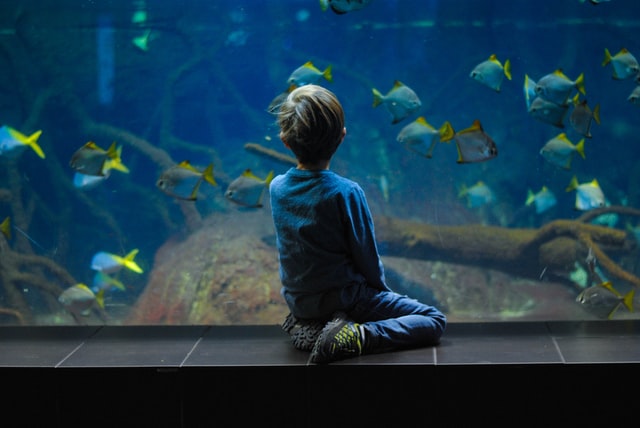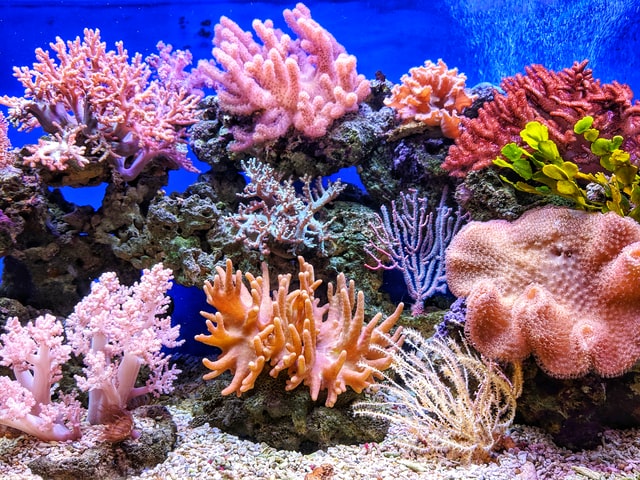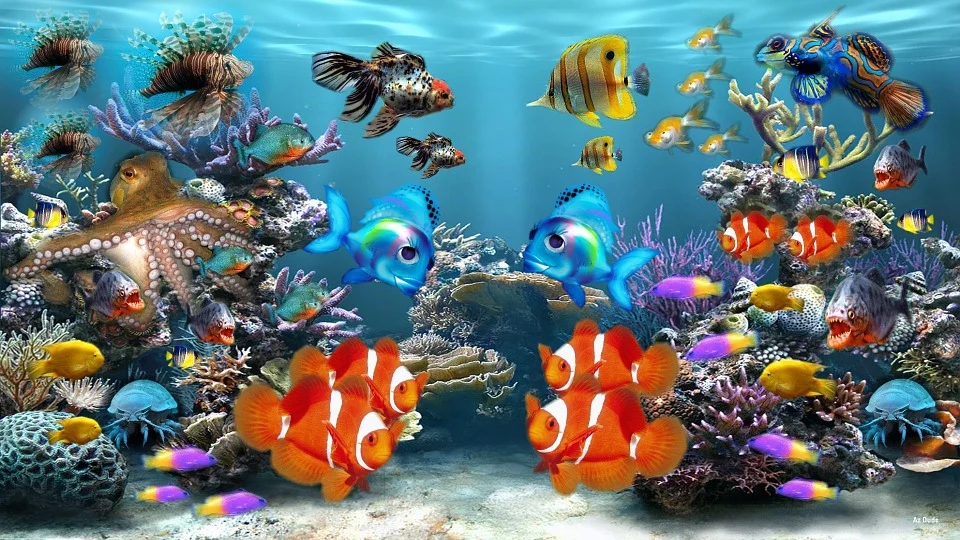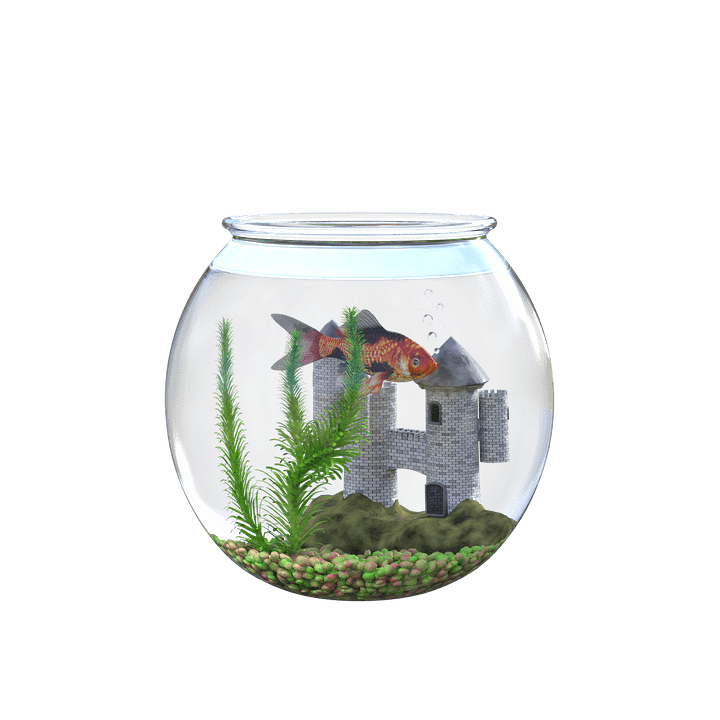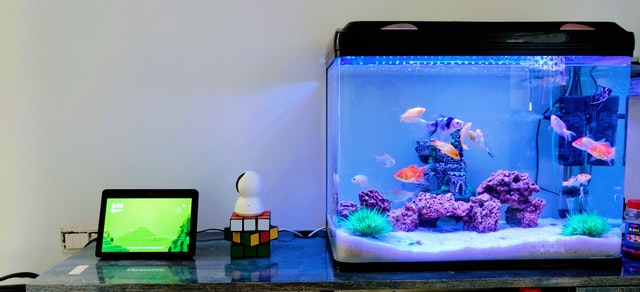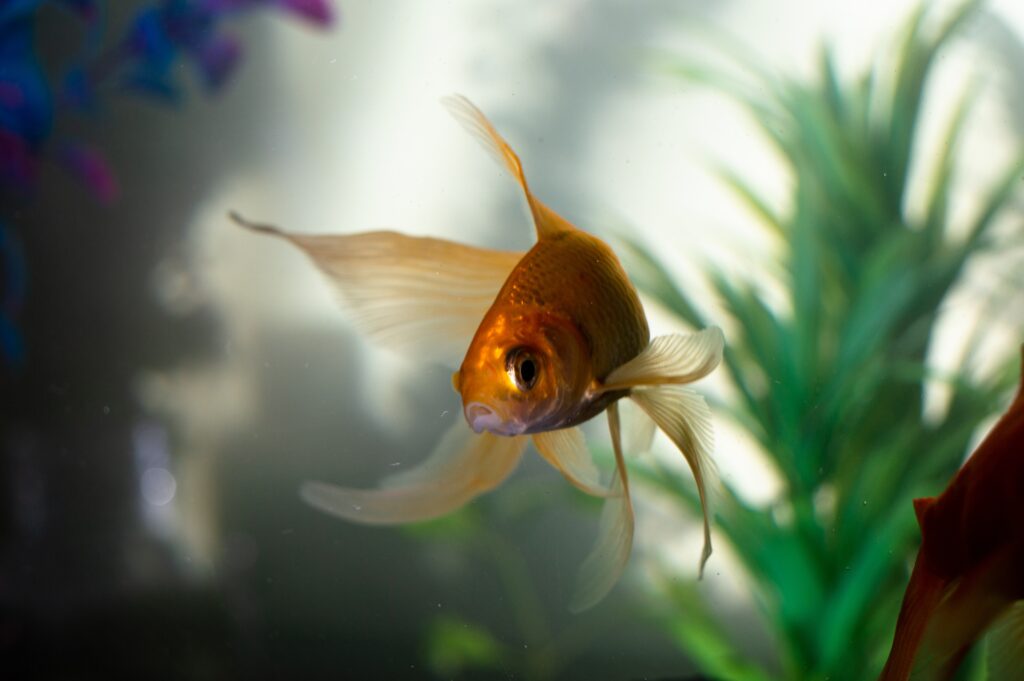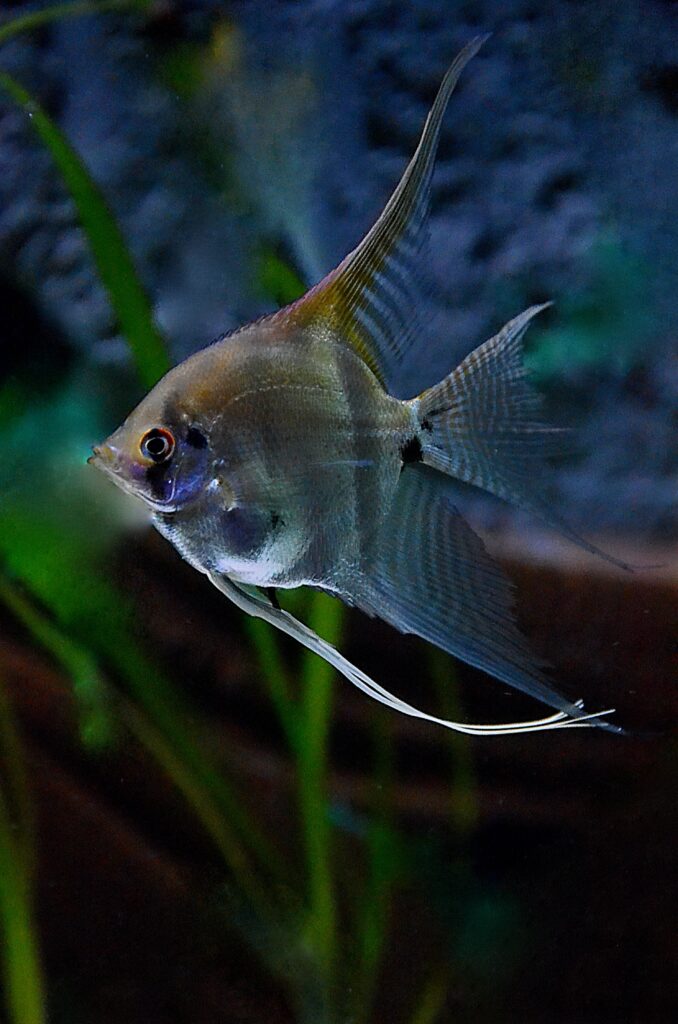Petkeeping is a common and fun hobby. Many like cats and dogs, while others choose birds, lizards, and fish. Fish is a popular pet for kids and adults because of its variety of colors, shapes, and sizes. Aquariums are great for homes and offices. Seeing your fish swim and play is entertaining and intriguing.
Sea creatures exhibit unique adaptations to survive in their underwater environment, including unique body shapes, colors, and behaviors. Some of the most well-known sea creatures include whales, dolphins, sharks, and colorful coral reef fish.
Fish are easy to keep as pets. If you can provide them with the finest amount of care you can, they will be happy. They rely on you to maintain a healthy environment for them, such as keeping a healthy aquarium clean. You’ll love it more if you know how to care for your fish. If you want to explore the colorful world of fishkeeping, try these beginner-friendly guidelines.
1. Provide a proper fish environment
Before buying colorful fish, find a suitable habitat for them in your home. Aquariums are popular options as homes for fish; other alternatives include fishbowls, ponds, and fountains. Choose the best place for your aquarium. Please do not place your aquarium near a heater or air conditioner because inconsistent temperatures can stress your fish which will eventually lead to its death. Your aquarium size should also vary according to the number of fish you plan to have. It will help if you don’t get too excited about filling your aquarium with colorful fishes because overcrowding can cause low oxygen levels, increased waste, and even deaths.
A fishbowl may be better if maintaining an aquarium is too much for you. Fishbowls range from spherical to molten glass; these are great for keeping goldfish. Moreover, if you plan to put fish in your pond or fountain, you should install an aerator. The aerator helps your fish breathe better, especially in colder seasons when they gather at the pond’s bottom to avoid drafts and frost.
2. Choose the right fish
After choosing the fish’s environment, select the proper species. Choosing fish helps you plan your aquarium setup—some fish flourish in saline water, others in temperate water, and others in frigid water. Temperate fish are low maintenance; some beginner-friendly temperate aquarium fish include minnows, danio, freshwater shrimps, and temperate rosy barbs. Low-maintenance and resilient cold-water fish are a fantastic investment. They’re perfect for novices because they don’t need aquarium heaters.
In contrast, tropical fish are challenging to breed and sustain compared to temperate and cold-water fish. To live, tropical fish need a fully oxygenated, 24°C to 27°C aquaria. Despite the high maintenance that tropical fish requires, most aquarium enthusiasts adore their vibrant colors and distinctive shapes.
3. Check water Ph level requirements
Preparing aquarium water to meet fish needs is part of the aquarium setup. Tap water should be treated with a dechlorinating agent and biological aquarium supplement before being used in your aquarium. Doing so ensures happy, healthy fish. Check water for saltiness, ammonia, nitrate, and nitrite. These can damage fish and aquatic vegetation. Check your aquarium’s pH level regularly with a testing kit. pH levels between 6.8 and 7.5 help fish withstand sickness. Adjust your water’s pH if it rises more than 0.3 in 24 hours.
4. Keep an inviting aquatic environment
Aquariums are one of the best parts of fish ownership, and the right accessories improve your fish’s life. Fish prefer ornamental caverns and tunnels to hide in and feel protected. Choose fish-friendly decorations for your aquarium and clean the tank before adding accessories. Place large plants in the tank’s back and little ones in front to give the fish a swimming area. You can also consult a breed-specific expert for aquarium design tips.
5. Learn about your fish’s dietary requirements
You have a responsibility as a fish parent to understand the dietary needs of your fish, which vary by species. Some fish like worms or shrimp, while others prefer algae or fish flakes. After knowing your fish’s appropriate diet, take note not to overfeed him. Overeating is bad for fish, like other animals and people. Consult a vet before getting a fish so you can meet its demands.
6. Keep your aquarium
Keeping your fish tank clean is essential. A messy aquarium is unappealing and unhealthy for your fish, that is why you need to tap and ask for help from the trusted Aquatech aquarium cleaning service experts. Your cleaning technique depends on the tank type and accessories. Aquarium maintenance can be automated. Still, water and filters must be changed often,
7. Be observant of any changes in your fish activities or conditions
After setting up your aquarium and adding fish, observe it often. See whether your fish’s look, behavior, or appetite changes to spot problems quickly.
8. Make sure you don’t mix up the fish!
As a fish pet owner, you should remember that some fish are aggressive; therefore, they should not be put together with peaceful and kind fishes. Betta fish, for example, may attack other fish. Fish of the same species but bigger breeds may eat smaller ones. Always investigate the fish you buy and make the appropriate arrangements.
9. Choose proper fish-tank equipment
What your aquarium can and cannot do is directly influenced by its filters, lighting, and substrate quality. In most cases, you can never “over-filter” an aquarium, and a low filter may not be able to handle all the waste your aquarium produces, leading to a gradual deterioration in water quality in terms of toxins and visible waste. A better option may be to purchase an external filter, as the ones included with aquariums are sometimes subpar. For aquariums exceeding 60cm, invest in an external filter for superior filtration and the flexibility to use multiple filter media. When choosing an aquarium substrate, consider if you’ll keep live plants. Changing the substrate later is dirty and challenging if you use larger gravels. Taking time to consider your equipment alternatives and perhaps going with a pricier option will pay you in the long term.
10. It’s time to relax and enjoy your tropical aquarium
The most important thing to remember is to have fun with your fish and aquarium. The goal of fish keeping is to create a short version of nature in the comfort of our homes. Your hard work will be rewarded handsomely when you see your fish flourishing and going about their daily activities in the world you have made for them. Do your best and be proud of your accomplishments when this happens.
Common Fish Pets
Fish cannot hug their owners like warm-blooded pets, but they provide constant beauty and a calming effect. However, before you go and purchase a fish, ensure all of the fish in your aquarium are compatible before adding any new fish species by conducting an extensive study to ensure that the new fish species’ environmental requirements match those of your aquarium. If you are a newbie in keeping fish as a pet, read the mechanics of raising a fish first. Here are some fish that are commonly grown as pets.
1. Betta
Bettas are unbeatable in terms of easy maintenance. Bettas, also called Siamese fighting fish, thrive in small fish tanks since they need to be separated. While it is essential to keep male bettas apart, some female bettas can coexist in aquariums with other fish.
2. Tetras
These fish are well-liked because of their toughness, calm demeanor, and small size. Tetras don’t need big tanks; keeping several of them together is simple. Most Tetra species can be kept together reasonably easy.
3. Cherry Barbs
You may have at least five cherry barbs in a single tank because they enjoy living together. They are also quite timid! It’s recommended to give your tank plenty of hiding places and to let cherry barbs get accustomed to their new environment before adding other fish. In addition, these fish require little to no maintenance. At schools, they like swimming around their tanks and eating almost anything. Cherry barbs should have at least two females for every male, even if you don’t breed them, to prevent males from overpowering a single female or fighting with a male for her attention.
4. Platy Mickey Mouse
Fish called platys are vibrant, live-bearing creatures that are excellent for beginners. Many enthusiasts start with just a few fish because they are live-bearing fish, but these fish can soon increase into numerous fish. The tail peduncle of the Mickey Mouse platy develops a highly distinctive color pattern.
5. Zebra Danios
Zebra danios are characterized by their striped bodies; they are usually resilient fish. Even in waters that are in the low 60s, they may survive and grow. Zebra danios mate for life, unlike many other species. These might be the simplest egg-laying species if you wish to breed active fish. Due to their calm disposition, zebra danios make peaceful community fish that swim all over the tank.
6. Cory Catfish
These adorable fish are bottom feeders who like to scavenge for food. They enjoy hiding in shady places and swimming in time with other Cory catfish. The ideal bottom for their tank would be soft sand. Although having a hard exterior comprised of bony plates, they are extremely sensitive to change and have been known to pass away shortly after being brought home from the pet store. Ensure the water conditions are like their former habitat for them to thrive.
7. Fantail Goldfish
The typical pet fish is a goldfish. There are other goldfish species, but the fantail species is one of the most popular because of its unique appearance. Goldfish fantails have long fins and tails. These gorgeous fish have calm personalities. The fantail goldfish get along well with other peaceful animals that can survive in colder water. Although they move slowly, they enjoy exploring, so keep large pebble substrate out of their reach if they decide to dig around. Interestingly, fantails are not found in the wild; the closest living relative is the wild carp. Their capacity to generate a lot of waste makes them even more bizarre. If you plan to have this, consider getting a high-quality water filter and be ready to change at least 25% of the water in your tank every week.
8. Angelfish
Angelfish can be found in a rainbow of colors, usually large, beautiful, and graceful. Because Angelof can grow eir size when full-grown, it requires at least a 55-gallon tank. Angelfish do nicely with other fish species, although they may eat extremely little fish and tend to fight each other. Angelfish prefer to hide in the aquarium’s foliage, so make sure there’s plenty when you shop for aquarium supplies.
9. Guppies
Guppies are like bettas but are not potentially aggressive. Males are just as colorful and get along well with other fishes. Guppies are energetic, plant-loving livebearers who like to swim among thick plants. One unique feature of these fish is that females can temporarily store sperm in their ovaries. You may be surprised to come home to twenty or fifty newborn guppies one day if you buy solely females. These hardy aquarium fish come in a rainbow of hues. They constantly reproduce, so the progeny will soon overwhelm a tank if you have males and females together.
10. Molly
These hardy little fish thrive in highly filtered environments. Mollies are unique among tropical fish because they give birth to live young rather than laying eggs. If you want to raise mollies, a ratio of one male per three to four females works best. Constant breeding from too many male mollies is stressful for females. Keeping mollies in a separate tank from other fish is recommended because they like to nibble on their fins.
The Advantages and Drawbacks of Setting up an Aquarium at Home
Aquarium fish can be rewarding and satisfying, but a few limitations exist.
Setting up a fish tank is a terrific learning experience for you and your children. Setting up an aquarium is like doing a science experiment. It would be best to research the nitrogen cycle, how to acclimate a fish, the benefits of live plants, how to breed fish, and the importance of water changes. You’ll also learn about the fish you’re breeding and how they behave.
Fishkeeping is also a relaxing hobby. If you supply your tank with tranquil fish, you can watch them swim all day. When you are stressed, observing your aquatic companions will relax. You will find the water splashes generated by your filter relatively peaceful, especially when your aquarium is set up in your workstation. Many office workers maintain aquariums on their desks to relieve stress.
Most importantly, fish are less needy than dogs and cats and make terrific pets. Once you have a wholly cycled aquarium, you only need to feed your aquatic creatures and perform water changes and cleanings. Otherwise, your fish won’t require your instruction.
Moreover, a beautiful fish tank with colorful and lovely fishes will enhance your home’s attractiveness. To make your aquarium stand out, you can surround them with live plants, the correct lighting, decorations, and other features.
The initial learning curve is the most significant challenge when acquiring a fish tank. You can’t just add fish to water; you must remove chlorine, build helpful microorganisms to break down fish wastes, and more. Keeping fish is more manageable than dogs and cats, but they still need care. Regular upkeep keeps fish healthy. The cleaning includes testing your water for pollutants, removing old water, introducing new water, cleaning the filter, and checking on your fish and living plants. Fish keeping requires frequent maintenance, which can be a messy job. A water change will likely spread unclean water. Without an aquarium top, water will evaporate and may damage your walls and electronics if you don’t dehumidify the room. Considering where to put a fish tank is essential. Location matters if you want a clean home.
Another disadvantage in owning a fish is that setting up a fish tank might be expensive. You’ll need an aquarium, water conditioner, filter, and heater. It would be helpful if you also bought fish and live plants, which might be pricey depending on the details. You must also pay for electricity, water, fish, food, medicine, and other equipment. Before starting your pastime, create a budget and know what you need to acquire so you’re not surprised by how pricey it is.

